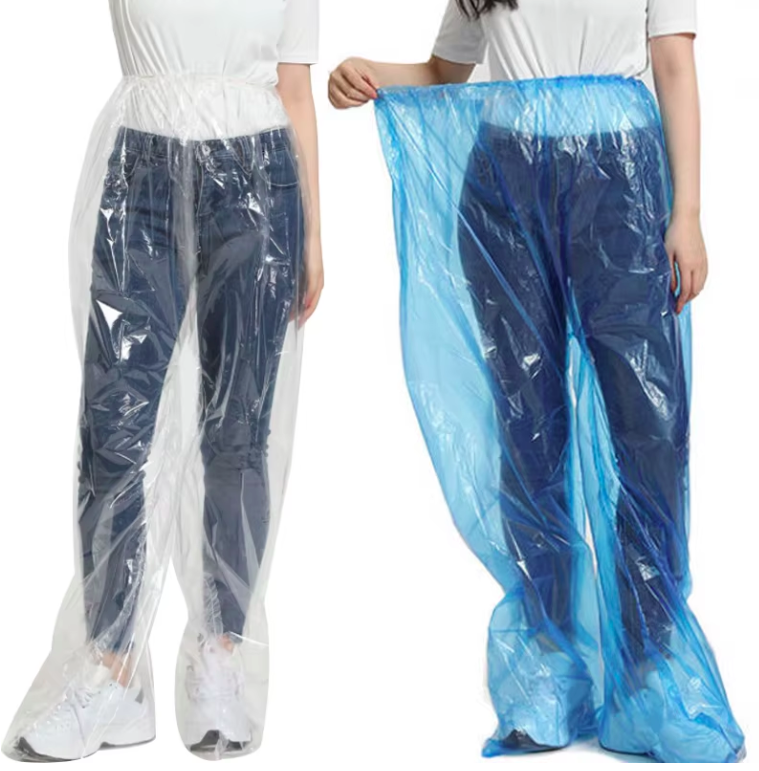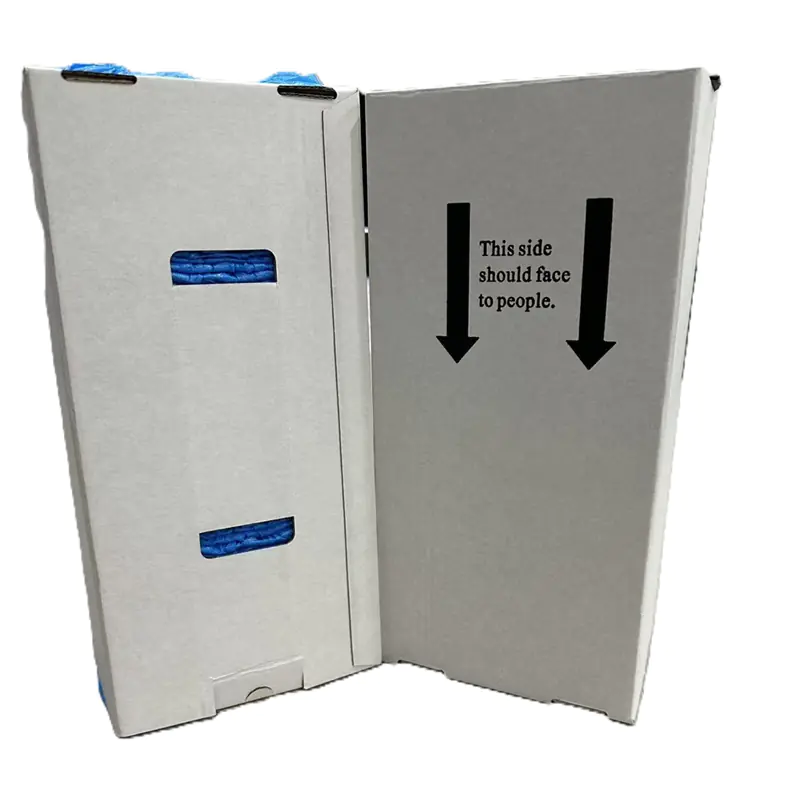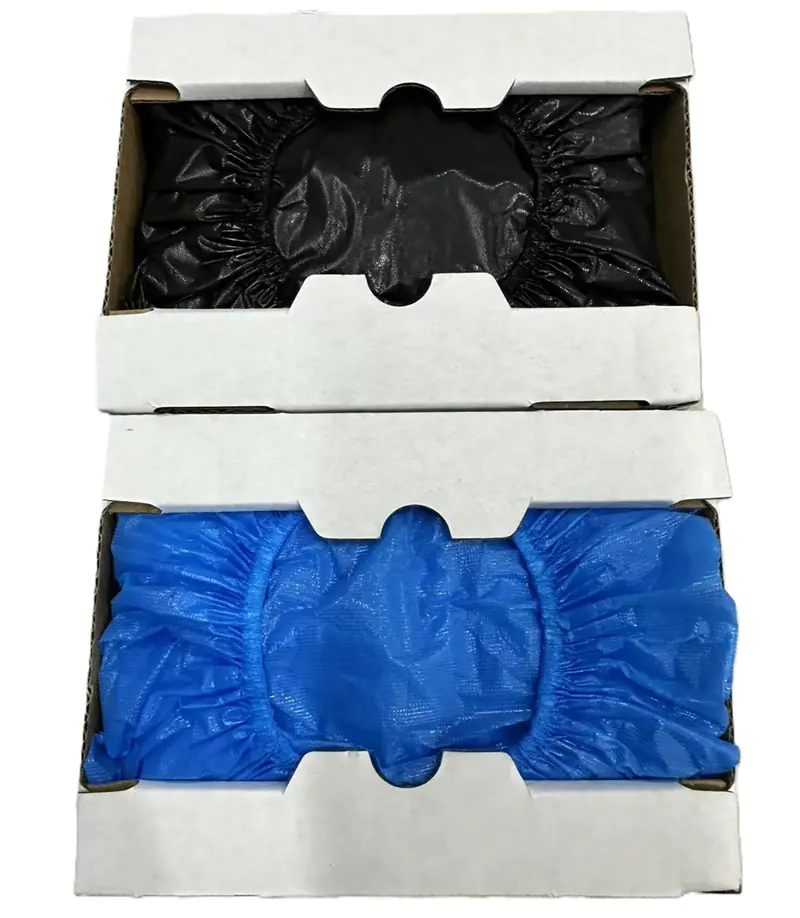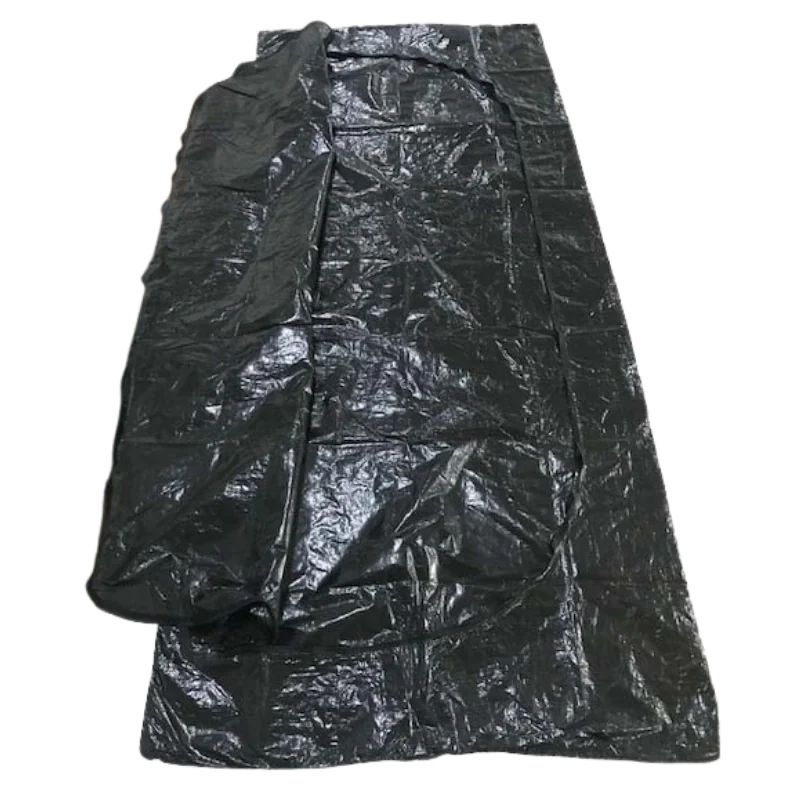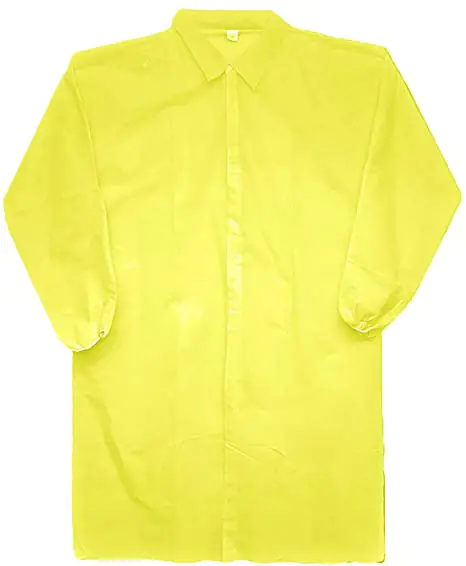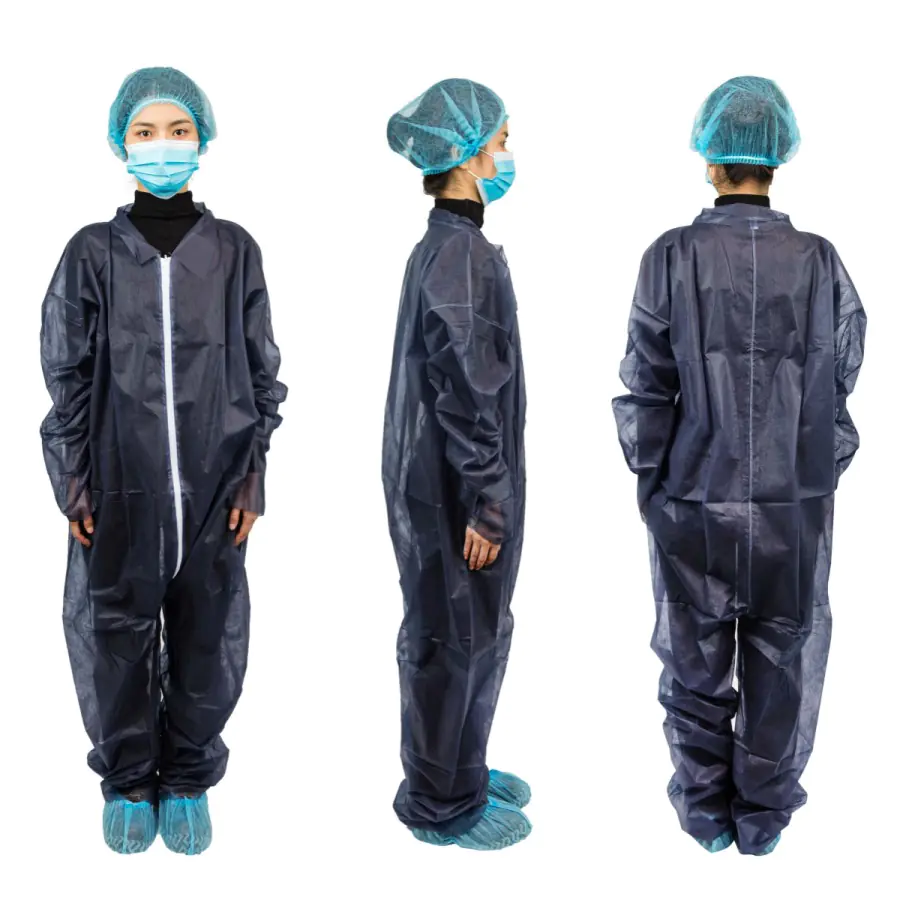Working outside means facing Mother Nature. Sometimes she sends heavy rainfall, snowstorms, or high winds. For outdoor workers like construction workers, landscapers, and utility line workers, staying dry isn’t just about comfort. It’s about safety. Being wet and cold can lead to serious health problems like hypothermia risks. That’s why having the right waterproof rain gear is so important.
But not all rain gear is the same. Old-style rain pants can be heavy, hard to move in, and cost a lot to wash and fix. What if there was a better way? There is! Disposable waterproof rain pants are a smart choice for many jobs in harsh weather conditions. These single-use storm pants offer great protection and solve many problems found with regular gear. Let’s look at the benefits of this disposable workwear. This is key for Occupational Safety Standards.
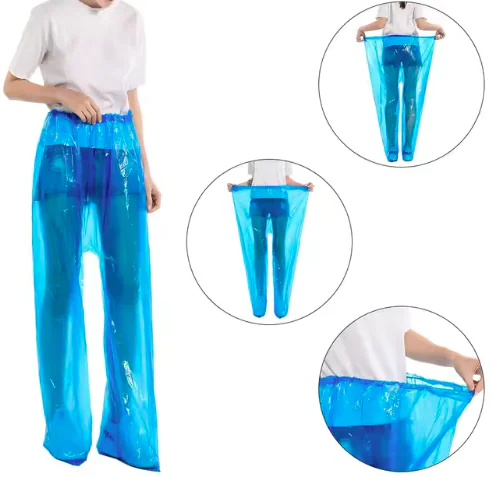
Why Disposable Waterproof Rain Pants Work Better Than Old Gear
You might wonder why choose something disposable. Here’s why these modern pants are often better for outdoor event staff and agricultural laborers.
1. They Keep You Totally Dry
The main job of rain pants is water ingress prevention. Disposable options use amazing materials like SMS fabric (Spunbond-Meltblown-Spunbond) or TPU laminates (short for Thermoplastic polyurethane). These materials are designed to be 100% waterproof.
- Sealed Tight: They often have reinforced seams or seam-sealed construction. This stops water from sneaking in through the stitching, even during big storms or in wet climates.
- Certified Protection: Many meet tough rules like the EN 343 certification. This European standard proves the clothing can handle bad weather. Following PPE standards is vital.
2. You Can Move Easily
Think about heavy rubber rain pants. They can make it hard to bend, climb, or walk quickly. Lightweight rain pants made from disposable materials are much lighter. Sometimes they are 70% lighter!
- Easy Fit: They usually have elastic waistbands and maybe adjustable leg openings. This gives you an ergonomic fit that moves with you.
- Better Work: This enhanced mobility helps road maintenance crews and forestry workers do their jobs better and safer, especially on rugged terrain compatibility.
3. Clean and Safe Every Time
Working outside can get dirty. Think about oil rig workers or emergency responders in flood zones. Reusing gear might spread germs or harmful stuff.
- Hygienic Choice: Hygienic disposability means you use the pants once and then throw them away. This helps prevent spreading dirt or germs. It’s great for skin irritation prevention.
- Meeting Rules: This type of gear often helps meet OSHA regulations for personal protective equipment (PPE). For jobs needing high visibility, look for ANSI/ISEA 107 compliance, often featuring high-visibility rainwear with reflective striping. These follow Occupational Safety Standards set by bodies like OSHA (Occupational Safety and Health Administration) and ANSI (American National Standards Institute).
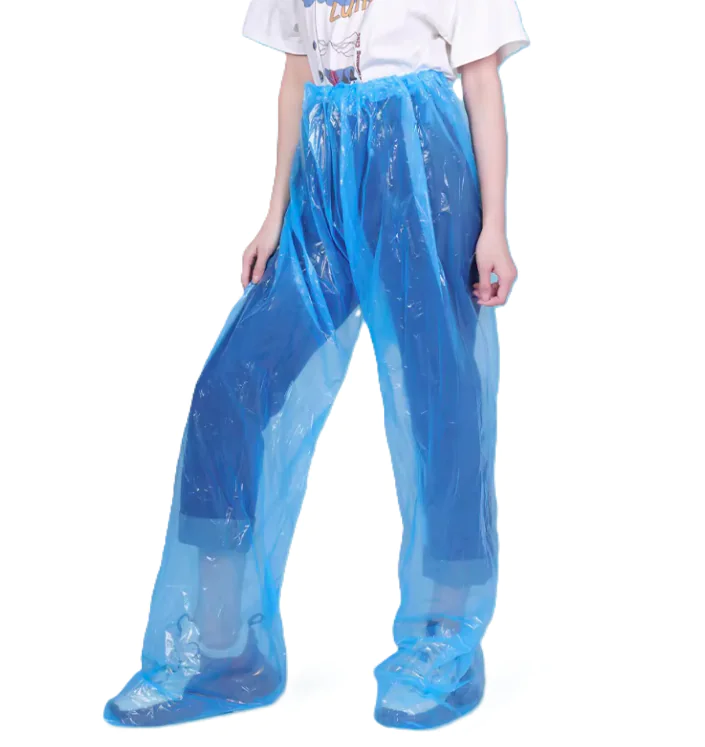
What to Look For in Good Disposable Rain Pants
Not all disposable pants are the same. Here are key features to check:
1. Smart Materials
The fabric makes a big difference. Look for material technologies that work hard.
- Water Rolls Off: DWR (Durable Water Repellent) coating makes raindrops bead up and roll away.
- Stay Cool: Some use breathable waterproof fabric with microporous films. These tiny holes let sweat vapor out (sweat management) but keep rain from getting in. This helps with thermal regulation and makes for all-day comfort. Check the breathability ratings. Materials like Polypropylene (PP) and Polyethylene (PE) are common. Some advanced options might even use nanotechnology coatings. You can find great options like disposable PP non woven suits.
2. Tough Enough for Tough Jobs
Even though they are disposable, they need to last through the workday.
- Strong Stuff: Look for tear-resistant layers. SMS fabric is known to resist tears much better than simple plastic. This gives industrial durability.
- Handles Heat and Cold: Good pants work well in extreme cold (like subzero temperatures found in Nordic countries) or heat. Some materials like EVA stay flexible from -30°F to 150°F. This ensures cold-weather adaptability.
3. Extra Safety Features
Depending on the job, you might need more protection.
- Be Seen: Reflective striping is crucial for working near traffic or in dark conditions, like coastal environments during storms. This helps meet ANSI/ISEA 107 standards. Consider high-visibility PPE kits.
- Special Needs: Some jobs need flame-resistant options (check for NFPA info) or chemical-resistant coatings (important for pipeline maintenance or mining operations). Some pants might have anti-slip grip designs or work with disposable protective overshoes like these disposable waterproof shoe covers. Slip-resistant soles are another factor in slip-and-fall hazards prevention.
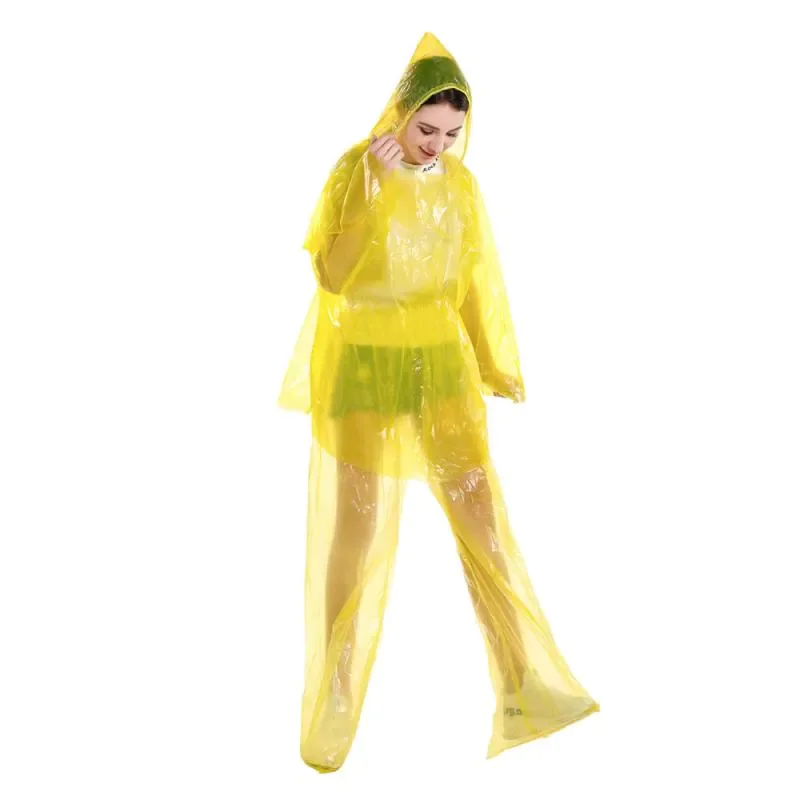
Saving Money with Disposable Rain Pants
It might seem like buying disposable gear costs more. But think about the total picture.
1. No More Washing or Fixing
Traditional rain gear needs washing and repairs. This takes time and money.
- Cut Costs: Using disposables can cut these reduced laundry costs and reduced maintenance needs by 40%. This means saving about $200 per worker each year! This improves the Total cost of ownership (TCO).
- Easy for Remote Jobs: No need to haul dirty gear back. Storage convenience is another plus. Quick-change systems mean less fuss.
2. Less Work Stoppage
When workers get wet, they might need to stop work to change or warm up. This causes delays.
- Keep Working: Disposable pants allow for quick changes, keeping projects on track. Studies show they can reduce weather-related downtime reduction by 25%. This boosts labor productivity and overall productivity metrics.
- Better ROI: Less downtime means a better Return on investment (ROI) for the project. Avoiding OSHA penalty avoidance is also a key financial benefit.
3. Save When Buying Many
Companies often buy disposable industrial apparel manufacturers‘ products in large amounts.
- Good Deals: Bulk purchasing discounts make the cost per pair very low, especially for large crews like municipal sanitation teams or warehouse staff. Look for safety gear distributors or Bulk PPE suppliers offering deals.
Thinking About the Earth
Okay, “disposable” can make people worry about trash. But there are earth-friendly choices too.
- Green Materials: Some pants use biodegradable polymers like PLA. These can break down much faster than regular plastic, sometimes 80% faster according to ASTM D6400 compostability standards. Look for compliance with REACH chemical safety rules and OEKO-TEX® certification.
- Recycling: Some industrial disposable apparel manufacturers have recycling programs or use recyclable materials. Check for ISO 14001 environmental management certification. Following EPA (Environmental Protection Agency) guidelines matters. Look for sustainable workwear startups innovating in this area. These are part of broader waste reduction strategies.
Who Uses These Pants?
These pants are useful in many fields that face environmental/weather conditions.
- Building and Roads: Construction workers and road maintenance crews deal with mud, rain, and debris. Temporary weather protection that is tough (on-site durability) is perfect for road construction projects.
- Saving Lives: Emergency responders need gear that keeps them safe and clean during disaster recovery in flood zones or tropical storm zones. Single-use hygiene is key here, supported by emergency response protocols. Post-shift disposability is a must.
- Farming and Forests: Agricultural laborers doing agricultural harvesting and forestry workers need breathable gear for hard work in wet climates or monsoon regions. They need moisture-resistant clothing that allows enhanced mobility. Park ranger duties in places like the Pacific Northwest also benefit.
- Other Tough Jobs: Utility line workers, oil rig workers on offshore drilling sites, telecommunication line work teams, and railway repairs crews all face industrial worksites where disposable waterproof workwear shines. Even warehouse staff moving goods in the rain benefit.
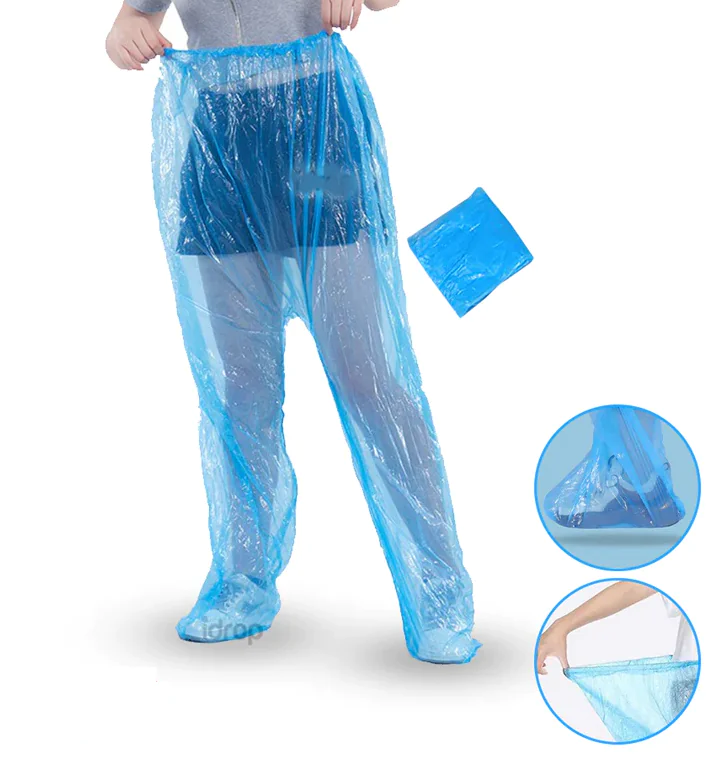
How to Pick the Right Disposable Rain Pants
Ready to try them? Here’s a quick checklist:
- [_] Waterproof Check: Make sure they meet EN 343 certification or similar PPE standards for water ingress prevention. Look for weatherproof zippers and laminated membranes.
- [_] Good Fit: Check for ergonomic fit, elastic waistbands, and adjustable leg openings. Custom sizing options might be available. Consider if multi-pocket designs are needed.
- [_] Breathe Easy: Look for good breathability ratings and moisture-wicking liners to prevent sweat management issues and ensure thermal insulation. Ventilation zones help.
- [_] Health First: Choose Latex-free materials if needed, look for anti-microbial treatments, and ensure they are allergy-safe designs for skin irritation prevention. Odor-control technology is a bonus. Check ISO 45001 for safety.
- [_] Eco-Friendly? Ask about recyclable materials or biodegradable polymers. Check ASTM International standards.
- [_] Safety First: Do you need high-visibility rainwear (ANSI/ISEA 107), flame-resistant options, or chemical-resistant coatings? Check OSHA regulations and NIOSH recommendations. Consider if anti-slip grip designs are useful. Think about layered clothing systems and weather monitoring systems.
- [_] Quality Matters: Look for vendors with ISO 9001 quality management.
Conclusion: Smart Protection for Tough Jobs
Working outdoors in bad weather is hard. Disposable waterproof rain pants offer a cost-effective protection solution that keeps workers safe, dry, and comfortable. They are lightweight, hygienic, easy to manage, and meet important safety & compliance rules from bodies like OSHA and ANSI. With options for different materials like Polypropylene (PP), Polyethylene (PE), SMS fabric, and even biodegradable choices, they fit many needs, from agricultural harvesting in Alpine environments to pipeline maintenance on the Gulf Coast. They help avoid hypothermia avoidance and reduce Work-related musculoskeletal disorders (WMSDs) by allowing better movement. They are a key part of emergency preparedness kits for many industries.
Ready to keep your crew safe and productive? Explore bulk pricing for disposable waterproof rain pants and request a sample kit today!

